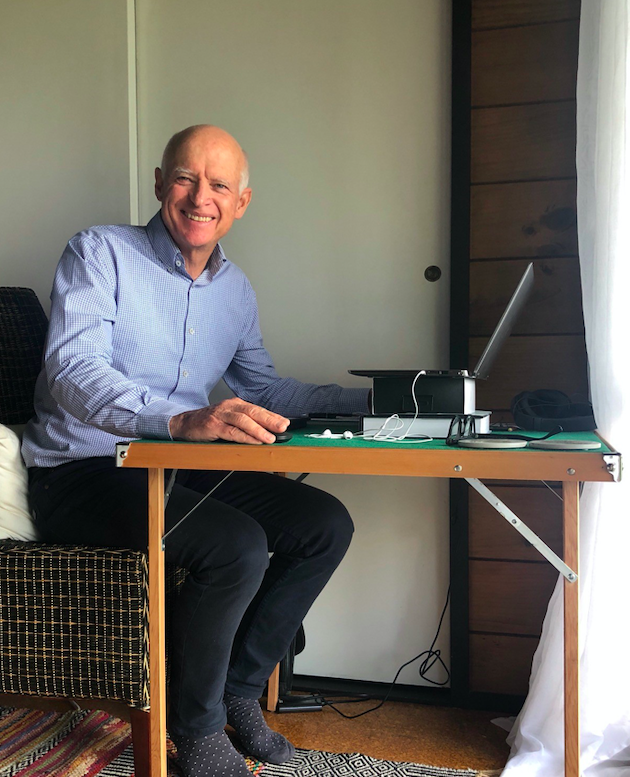
Derrick, how has the COVID-19 pandemic affected HEB Construction?
We were fortunate that our operations and maintenance contracts were classed as essential work when the lockdown was put in place. Having those contracts in place allowed some of our staff to continue working. However, the balance of our capital works programme was shutdown which put 700 – 800 people out of work. This caused an 80-85% reduction in our turnover for April, but thankfully the Government’s wage subsidy helped many of our staff through some challenging times.
What issues did your staff face as they returned to the worksite under COVID-19 Alert Level three?
Our management team spent many hours during the shutdown, exploring the best approach to managing the return to work. We put a lot of effort into developing protocols which supported the Government’s rules on how to return to work safely. Not all our projects started again on day one. There was a progressive start to some of our projects. All sites were eventually back in action by the end of the first week after the return to Alert Level 3.
What effect is social distancing having on the worksite?
I believe it’s easier to achieve social distancing in the civil construction industry rather than in the building industry where people are forced to work in closer proximity to one another. In our industry, we have a person on a digger, with a shovel or driving a roller which means social distancing can be maintained. However, other jobs that we’re involved in like installing a valve or laying reinforcing steel do require workers to be relatively close together. The social distancing rules have enabled us to undertake a detailed look at how we are working and how we can maintain a safe environment for our workers.
Has the closure of the international border created any staffing issues for HEB?
The border closure has not caused us any problems on around 80% of our projects. The staff on most of our sites are locally based, which has allowed the work to get underway again. However, that is not the case for the Transmission Gully project in Wellington where we are a junior partner. Before the COVID-19 pandemic hit our shores, a significant number of workers were flying in and out from overseas. The border closure means that workers from Australia, the Philippines and some specialist overseas suppliers are not able to be part of the workforce at the moment, and this has had a significant impact on the progress of the project.
Are there enough skilled workers in New Zealand for the Government’s “shovel ready” projects initiative?
The infrastructure sector is in the fortunate position of being identified by the Government as an area that can provide economic stimulus as the country emerges from the effects of the COVID-19 pandemic. We are likely to see a significant amount of work channelled into the sector, which will be a massive boost for employment around the country. There is a group of skilled workers who are available to take up positions when the “shovel ready” projects get the green light, but there may also be an opportunity for new recruits to join the industry with employers increasing their training programmes. The key to encouraging workers into the industry is to ensure that there is certainty in the amount of work that is immediately in front of us and maintaining a significant pipeline of projects. A continuous pipeline of projects will encourage the industry to invest in its staff. We need a firm commitment from the Government to an extended work programme and an assurance that the current promises are not just a five-minute wonder.
What are the upcoming challenges for the industry post-COVID-19?
In the field, we now have an opportunity to plan and become more efficient at social distancing to ensure work progresses at an acceptable rate and staff stay safe.
It’s essential work for our management team as social distancing on the worksite could be around for the foreseeable future. The industry will also be carefully watching the procurement process that will be initiated by infrastructure owners and the Government. Most businesses are under the pump at the moment in terms of cash flow, and the economic stimulus work is being seen as a lifeline for many of these companies.
The last thing the industry needs is to be forced down a path of costly and time-consuming procurement processes.
I am hopeful that there will be some collaborative procurement models put in place which will allow us to work efficiently through the front end of new work.
If the economic stimulus initiatives are to be used to their best advantage, there must be certainty of work so that we can recruit, train and develop an expanded workforce. This will allow us to get the new work programme underway promptly.
If we can achieve these aspirations, the construction industry could emerge from the COVID-19 pandemic in great shape.
